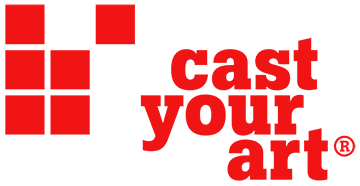Balthus
The first comprehensive retrospective of the controversial artist Balthus (Balthasar Klossowksi de Rola) will be on display in the Bank Austria Kunstforum until June 19, 2016.
The exhibition was curated by Evelyn Benesch, Cécile Debray and Matteo Lafranconi, a cooperation with the Scuderie del Quirinale and Villa Medici, containing loans by the Centre Pompidou, the Musée national d’art moderne (Paris), The Art Institute of Chicago, Tate London, and The Metropolitan Museum of Art (New York) as well as by the family of the artist.
Balthus (Baltasar Klossowski de Rola) was born in Paris in 1908, into a Polish family with artistic inclinations. His elder brother Pierre Klossowski (*1905) was to become a renowned author, translator and painter. When their parents divorced, the brothers lived in Switzerland, where their mother’s companion, the poet Rainer Maria Rilke became their mentor. The story of the stray cat Mitsou by the 11-year old Balthus, in 40 graphite and ink drawings, impressed Rilke so much that he had it published with a foreword written by him. The booklet is on display in the Bank Austria Kunstforum as well.
The exhibition contains early works from Paris, chronologically leading up to the artist’s last days in Switzerland. One of the most interesting aspects is the influence that literature like Alice in Wonderland, Max und Moritz or Shockheaded Peter had in Balthus’ painting.
There are early sketches, nudes and portraits of his social circle in Paris that included André Gide, Paul Valéry, Artaud, Camus and André Derain and also landscapes fro m his advanced age in France and Switzerland. Towards the end of the exhibition rarely seen stage and costume designs are on display, and also the controversial Polaroid colour photographs of a half naked very young girl. The outrage these pictures provoked in 2014 was the cause for the cancellation of the Balthus exhibition in the Folkwang Museum of Essen, Germany.
Balthus’ painting is a perpetual exception: very personal, unaffected by all major currents and –isms, hardly classifiable. A continuous oeuvre that never followed any tendencies or fads, a series of variations of key topics with some recurrent elements: girls, cats, light, mirrors.
His very personal imagery with its definite forms and clear outlines combined the approach of the old masters with certain facets of surrealism.
He was the only artist to be exhibited in the Louvre museum in his lifetime, as part of the donation of Picasso’s private collection to the Louvre.
Just as he was an outsider as a painter, in his personal life he was never involved in politics, social conflicts, or the art market. At times he was labelled a surrealist, but he remains impossible to relate to any movement, he always kept his distance to political and social issues.
Neither cubism nor abstract painting had any major influence on his painting that maintained the character of Pompeian frescoes. Among other things, his love of literature and theatre made him retain his idiosyncratic and mystical figurative style.
Although there are allusions to Magritte and his paradoxical figuration or to Delvaux and his placement of female figures in the scenery and his monomaniac treatment of subjects reminds of Modigliani, his light situations of Hopper, or his quest for Harmony and equilibrium of the Renaissance painters, there is always a remaining inexplicable, originally Balthusian surplus.
He captured the essence of Déjà-vu, the feeling of something already seen that stays concealed in everyday gestures and acts. There is a perpetual youth, an eternal beginning in Balthus’ paintings – a sketchy premonition of an oeuvre that is forever in the beginning, cherishing the moment. (written by Cem Angeli)
Bank Austria Kunstforum www.kunstforumwien.at
A film produced by CastYourArt www.castyourart.com
Elements of reality, merged with dream scenarios into mysterious images: The history and development of Balthus’ (1908-2001) controversial oeuvre is on display in the Bank Austria Kunstforum until June 19.
https://www.kunstforumwien.at/Das könnte Sie auch interessieren

ASSEMBLE. Wie wir bauen, im Architekturzentrum Wien
12. June 2017
Franz Xaver Ölzant - Idea, Process, Form
8. April 2015
IRON MEN. Fashion in Steel
23. April 2022
The Bruce High Quality Foundation - Con Artists
1. July 2009
Miguel Alvear - Tableaux popular
25. February 2009
KLAUS ALBRECHT SCHRÖDER. A retrospective on 25 years as a visionary leader of the Albertina
30. December 2024
THE BEGINNING. Art in Austria, 1945-1980. #10 Franz West and the Development of Sculpture
26. October 2020
